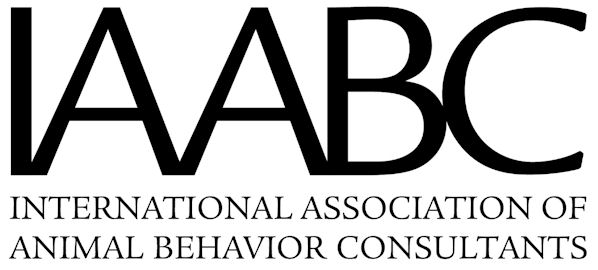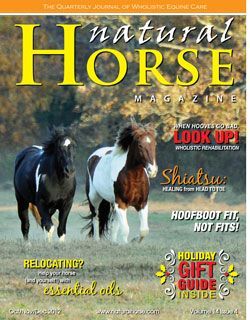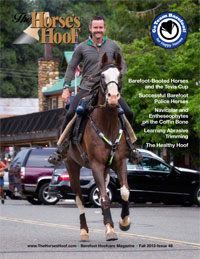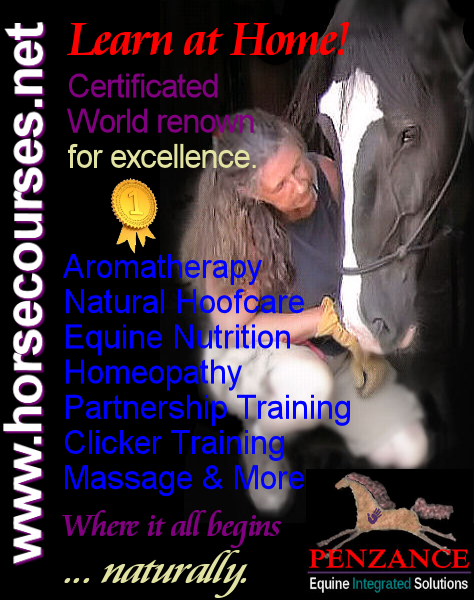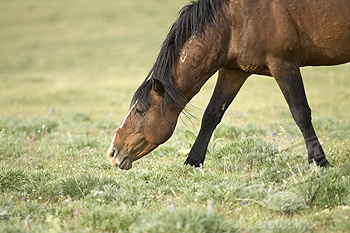 QUESTION:
QUESTION:
My 3 yo gelding has developed a habit of dipping his neck down, then shaking his head at me at feeding time. I assume his attitude says he is more important than I am, and wonder how to correct him. He is second to the mare in herd status, she is just 4 but very dominant over him, but accepts me as lead mare. Why has my horse taken such a turn? Had him since he was a baby, and the only difference is, its winter so I don’t spend as much time with them.
–Alisha, WI
ANSWER:
Hi Alisha. Well, something’s gotten into his craw, eh? *grin* Some times, some horses, like to daily test (or even more often) their own position in the herd. That means that the horse will test to make sure he’s still the follower (or leader as it seems your gelding thinks) in order to help them feel secure in their world. If the handler doesn’t take up the trusted leader position then the horse will. In this case I think your gelding is just testing you and you’ve not stepped up to the plate in a manner that will help quell his insecurities. The fact that you’ve not been able to spend much time with him further adds to this situation especially with a young’un. He’s only 3 and will continue to test his ‘herd’, his environment, his status in order to ‘find himself’ and his spot in his own, comfortable world.
There are a couple of ways to approach this — one using nothing but positive reinforcement and the other using +R AND pressure/release (negative reinforcement) together. Using any sort of ‘punishment’, especially at this playful age, will only exacerbate the situation as your gelding will, most likely, view whatever ‘punishment’ you dole out as merely a play behavior. Horses at this age participate in ALOT of ‘play behavior’ as practice for when they’re ‘all growed up’. *Grin* … Especially, the boys. Gelded or not. It’s something that is hardwired into their behavioral programming. Also, its been proven with studies that using punishment with the horse results in the horse only performing or executing a desired behavior when punishment is applied (in future applications) and … cause what’s known as “avoidance conditioning” behaviosr. Contrarily, using +R will help cement the desired behavior for a lifetime.
I would do some studying up on Clicker Training and how to use it with your horse. Using +R only, you can mark and reward the behavior you DO want, do this consistently when starting out, and the behavior you don’t want will become extinct. In other words, the horse will repeat behaviors that make him feel good (rewarded) vs. those that are ignored. Begin with the slightest behavior such as the simple stop of the head shaking or neck swinging. When the horse stops, mark that with the clicker (or other suitable, distinguishable noise) and give him a treat. Your timing in marking the ‘stopping’ of the head shaking or neck swinging is imperative to the success of your lesson with him. Repeat the marking and reward until you see he is consciously making the decision to NOT swing his head. Alternatively, you can teach him an ‘opposite’ behavior to take the place of the head shaking and neck swinging. For instance, ask him to back up (now you’ll use BOTH positive and negative reinforcement), click him in the INSTANT he’s backing up, reward. Repeat. To do this with strictly positive reinforcement you’ll wait for him to take a step backward and click in that instant he’s doing so, reward, repeat.
PENZANCE has a course on Clicker Training the Horse that you can take in your own time, at your own pace and have FUN while doing this. Check it out here: www.horsecourses.net on the HOME STUDY page. I know that once you start utilizing Clicker Training with your young boy that you’ll LOVE it and it will become a solid base for the rest of his learning.

